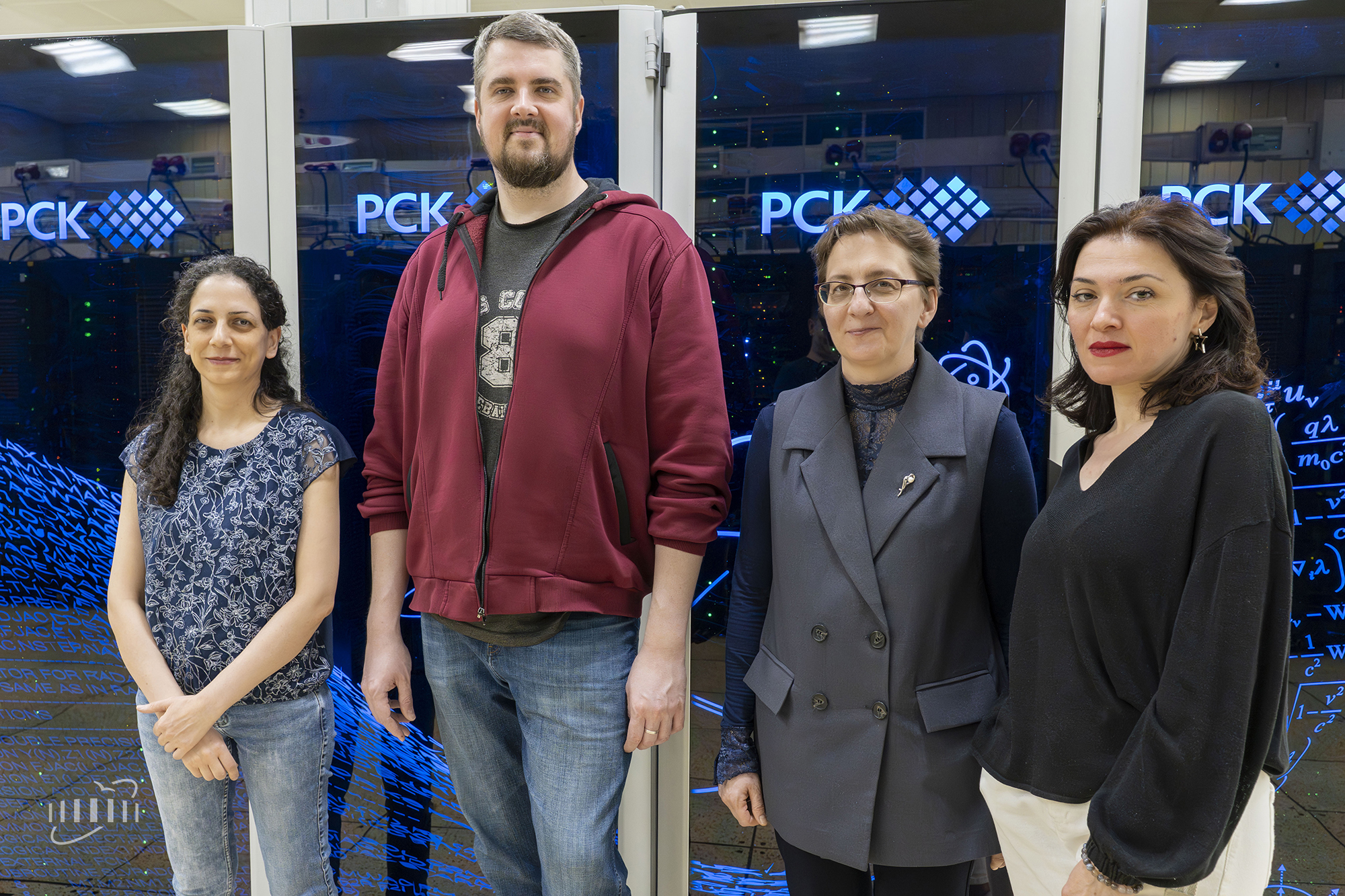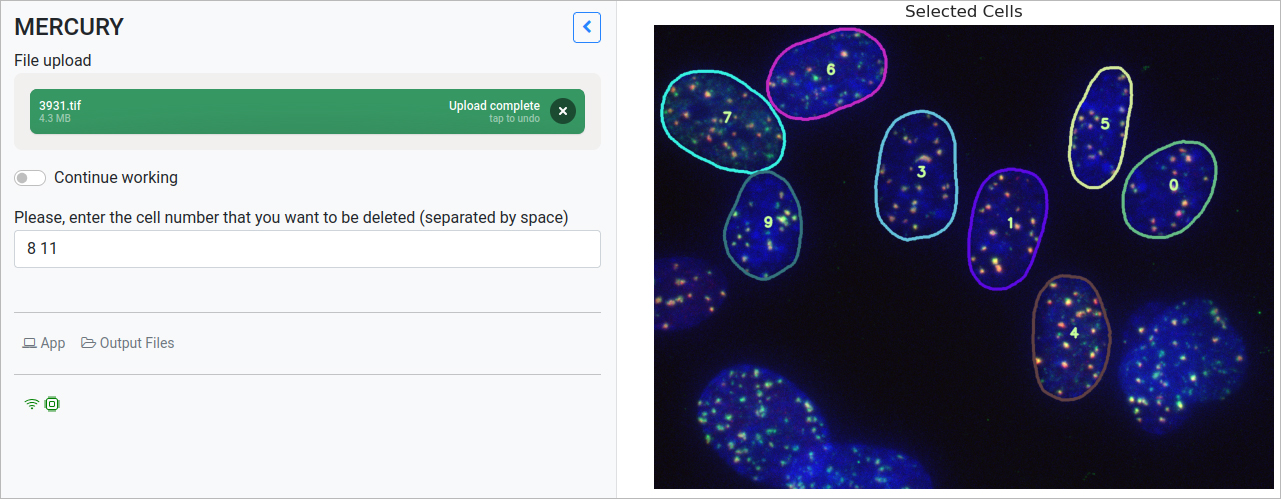MLIT JINR creates web service to analyse DNA radiation damage
News, 08 April 2025
Researchers at the Meshcheryakov Laboratory of Information Technologies are developing the MOSTLIT Web Service, a tool for automating the detection of ionising radiation-induced foci (IRIF) in cell nuclei and subsequent analysis of their parameters. The service is designed to optimise the processing of experimental data obtained during radiobiological studies, providing researchers with convenient and effective analysis tools.
MOSTLIT is partly an acronym consisting of the initial letters of the names of employees of the MLIT JINR Sector of Heterogeneous Computing and Quantum Information Science who are directly involved in the development of the service, the creation of algorithms, and functional testing: Maxim Zuev, Oksana Streltsova, Sara Shadmehri, and Tatevik Bezhanyan. The team is working in collaboration with colleagues from the Laboratory of Radiation Biology at JINR under the guidance of Alla Boreyko, Dubna State University, and Burnasyan Federal Medical Biophysical Centre.
 MOSTLIT Web Service developers. From left to right: Sarah Shadmehri, Maxim Zuev, Oksana Streltsova, Tatevik Bezhanyan. Photo by Alexey Vorontsov
MOSTLIT Web Service developers. From left to right: Sarah Shadmehri, Maxim Zuev, Oksana Streltsova, Tatevik Bezhanyan. Photo by Alexey Vorontsov
Exposing living cells to ionising radiation leads to a number of different types of DNA damage, among which double-stranded breaks are the most dangerous and difficult to repair. For their visualisation, immunocytochemical staining is used, which is a method based on detecting specific marker proteins (such as yH2AX or 53BP1), which accumulate at the locations of rupture, forming radiation-induced foci.
One of the most common approaches to estimating the number of foci is still the traditional visual analysis of fluorescent RIF images, performed manually by several operators. Due to the human factor and high labour costs, it became necessary to create a tool capable of minimising researchers’ efforts and simplifying data processing.
To detect RIF in fluorescent images, MOSTLIT uses a two-step algorithm based on computer vision and deep learning techniques. This approach makes it possible to significantly speed up data processing, minimse human errors, and obtain images of individual cells with identified foci. In addition, the web service provides source images with numbered cells and analytical information such as cell area, the number of RIF in each cell, etc. All results are available for download in a convenient text format, providing flexibility and compatibility with various statistical data processing software.
The creation of MOSTLIT is focused on the growing needs of scientists in DNA damage analysis. Thanks to the service’s scalable architecture, developers can expand its functionality based on user feedback. This iterative approach to development ensures the long-term relevance and effectiveness of the service for the scientific community.
“MOSTLIT is designed to significantly accelerate the analysis of radiation-induced foci in cell nuclei by automating experimental data processing,” Oksana Streltsova comments. “Currently, data analysis often takes several months, requiring manual calculations and the involvement of several people. The service under development significantly reduces data processing time, providing users the ability to quickly analyse data and create statistical dependencies”.
The new web service is part of the ML/DL/HPC Ecosystem of the HybriLIT Heterogeneous Computing Platform and available at https://mostlit.jinr.ru for registered users connected to the Joint Institute for Nuclear Research network.
